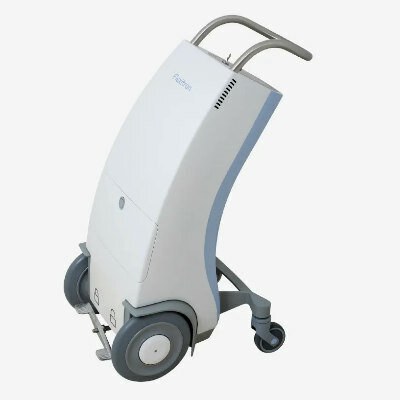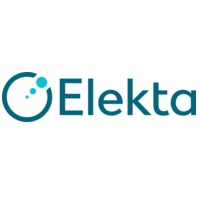4D MRI Could Improve Clinical Assessment of Heart Blood Flow Abnormalities
|
By MedImaging International staff writers Posted on 19 Mar 2024 |

Magnetic Resonance Imaging (MRI) utilizes magnets and pulsed radio frequency to generate computer images for screening and diagnosing medical conditions. 4D flow MRI, an advanced imaging technique, provides a more detailed view of the heart and the aorta by adding movement as a fourth dimension. This allows healthcare professionals to see how blood moves through the cardiovascular system in detail and identify any potential issues that may require further examination. Previous studies have indicated that evaluating blood stasis and peak velocity in the left atrium and its appendage using 4D flow could aid in identifying impaired blood flow, which increases the risk of forming blood clots. However, the relationship between conventional volumetric and functional left atrium parameters with flow characteristics in the left atrium and left atrium appendage had not been fully investigated until now.
Now, a study by researchers from Northwestern University (Evanston, IL, USA) has discovered that combining whole-heart 4D flow with short-axis cine MRI can identify characteristics linked to poor blood flow in the heart’s left atrial chamber. These insights could enable doctors to more accurately diagnose abnormalities in heart blood flow. The study aimed to explore whether the relation between 4D flow parameters and conventional volumetric-based left atrial assessment could help better identify participants with impaired flow characteristics and improve the understanding of mechanistic relationships between left atrial flow and volumetric parameters. The study involved data from 158 patients all of whom underwent prospective cardiac MRI exams consisting of whole-heart 4D flow and short-axis cine imaging. The analysis of the 4D flow MRI involved manual 3D segmentation of the left atrium and its appendage to measure peak velocity and blood stasis.
The team utilized short-axis cine data to define left atrial contours, extracting 3D–based left atrial volume measures to calculate left atrial emptying fractions [total LA emptying fractions (LAEFtotal), active LA emptying fraction (LAEFactive), and passive LA emptying fraction (LAEFpassive)]. They also measured left atrial stasis, left atrial peak velocity, left atrium appendage stasis, and left atrium appendage peak velocity flow parameters to detect any connection with left atrial volume and left atrial emptying fraction. The researchers found that a one-unit increase in LAEFtotal was related to reduced left atrial stasis (p < 0.001) and higher LAEFactive was related to increased left atrial peak velocity (p < 0.001). They also found that increased minimum left atrial volume was most likely related to impaired left atrial appendage flow and lower left atrial appendage peak velocity.
"Increased absolute and indexed minimum left atrial volume was most closely associated with impaired left atrial flow, which is a known risk factor for left atrial thrombus formation and potentially ischemic stroke," the researchers concluded. "Thus, 3D-based left atrial volume quantification may be a useful surrogate measure for left atrial and left atrial appendage flow abnormalities in future studies."
Related Links:
Northwestern University
Latest MRI News
- PET/MRI Improves Diagnostic Accuracy for Prostate Cancer Patients
- Next Generation MR-Guided Focused Ultrasound Ushers In Future of Incisionless Neurosurgery
- Two-Part MRI Scan Detects Prostate Cancer More Quickly without Compromising Diagnostic Quality
- World’s Most Powerful MRI Machine Images Living Brain with Unrivaled Clarity
- New Whole-Body Imaging Technology Makes It Possible to View Inflammation on MRI Scan
- Combining Prostate MRI with Blood Test Can Avoid Unnecessary Prostate Biopsies
- New Treatment Combines MRI and Ultrasound to Control Prostate Cancer without Serious Side Effects
- MRI Improves Diagnosis and Treatment of Prostate Cancer
- Combined PET-MRI Scan Improves Treatment for Early Breast Cancer Patients
- MRI-Guided Focused Ultrasound Therapy Shows Promise in Treating Prostate Cancer
- AI-Based MRI Tool Outperforms Current Brain Tumor Diagnosis Methods
- DW-MRI Lights up Small Ovarian Lesions like Light Bulbs
- Abbreviated Breast MRI Effective for High-Risk Screening without Compromising Diagnostic Accuracy
- New MRI Method Detects Alzheimer’s Earlier in People without Clinical Signs
- MRI Monitoring Reduces Mortality in Women at High Risk of BRCA1 Breast Cancer
- Breakthrough AI-Based Quantitative Brain Imaging in MR to Advance Neurology Care
Channels
Radiography
view channel
Novel Breast Imaging System Proves As Effective As Mammography
Breast cancer remains the most frequently diagnosed cancer among women. It is projected that one in eight women will be diagnosed with breast cancer during her lifetime, and one in 42 women who turn 50... Read more
AI Assistance Improves Breast-Cancer Screening by Reducing False Positives
Radiologists typically detect one case of cancer for every 200 mammograms reviewed. However, these evaluations often result in false positives, leading to unnecessary patient recalls for additional testing,... Read moreUltrasound
view channel
Deep Learning Advances Super-Resolution Ultrasound Imaging
Ultrasound localization microscopy (ULM) is an advanced imaging technique that offers high-resolution visualization of microvascular structures. It employs microbubbles, FDA-approved contrast agents, injected... Read more
Novel Ultrasound-Launched Targeted Nanoparticle Eliminates Biofilm and Bacterial Infection
Biofilms, formed by bacteria aggregating into dense communities for protection against harsh environmental conditions, are a significant contributor to various infectious diseases. Biofilms frequently... Read moreNuclear Medicine
view channel
New SPECT/CT Technique Could Change Imaging Practices and Increase Patient Access
The development of lead-212 (212Pb)-PSMA–based targeted alpha therapy (TAT) is garnering significant interest in treating patients with metastatic castration-resistant prostate cancer. The imaging of 212Pb,... Read moreNew Radiotheranostic System Detects and Treats Ovarian Cancer Noninvasively
Ovarian cancer is the most lethal gynecological cancer, with less than a 30% five-year survival rate for those diagnosed in late stages. Despite surgery and platinum-based chemotherapy being the standard... Read more
AI System Automatically and Reliably Detects Cardiac Amyloidosis Using Scintigraphy Imaging
Cardiac amyloidosis, a condition characterized by the buildup of abnormal protein deposits (amyloids) in the heart muscle, severely affects heart function and can lead to heart failure or death without... Read moreGeneral/Advanced Imaging
view channel
New AI Method Captures Uncertainty in Medical Images
In the field of biomedicine, segmentation is the process of annotating pixels from an important structure in medical images, such as organs or cells. Artificial Intelligence (AI) models are utilized to... Read more.jpg)
CT Coronary Angiography Reduces Need for Invasive Tests to Diagnose Coronary Artery Disease
Coronary artery disease (CAD), one of the leading causes of death worldwide, involves the narrowing of coronary arteries due to atherosclerosis, resulting in insufficient blood flow to the heart muscle.... Read more
Novel Blood Test Could Reduce Need for PET Imaging of Patients with Alzheimer’s
Alzheimer's disease (AD), a condition marked by cognitive decline and the presence of beta-amyloid (Aβ) plaques and neurofibrillary tangles in the brain, poses diagnostic challenges. Amyloid positron emission... Read more.jpg)
CT-Based Deep Learning Algorithm Accurately Differentiates Benign From Malignant Vertebral Fractures
The rise in the aging population is expected to result in a corresponding increase in the prevalence of vertebral fractures which can cause back pain or neurologic compromise, leading to impaired function... Read moreImaging IT
view channel
New Google Cloud Medical Imaging Suite Makes Imaging Healthcare Data More Accessible
Medical imaging is a critical tool used to diagnose patients, and there are billions of medical images scanned globally each year. Imaging data accounts for about 90% of all healthcare data1 and, until... Read more
Global AI in Medical Diagnostics Market to Be Driven by Demand for Image Recognition in Radiology
The global artificial intelligence (AI) in medical diagnostics market is expanding with early disease detection being one of its key applications and image recognition becoming a compelling consumer proposition... Read moreIndustry News
view channel
Bayer and Google Partner on New AI Product for Radiologists
Medical imaging data comprises around 90% of all healthcare data, and it is a highly complex and rich clinical data modality and serves as a vital tool for diagnosing patients. Each year, billions of medical... Read more




















